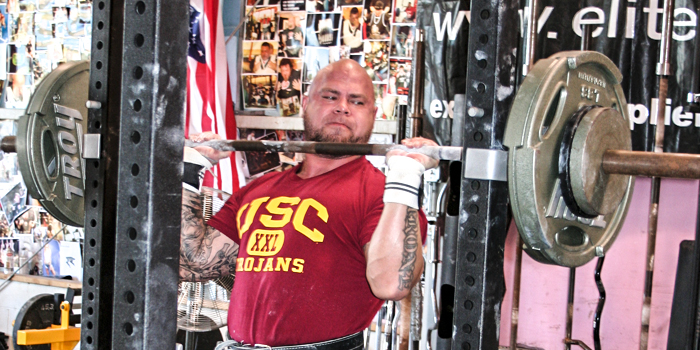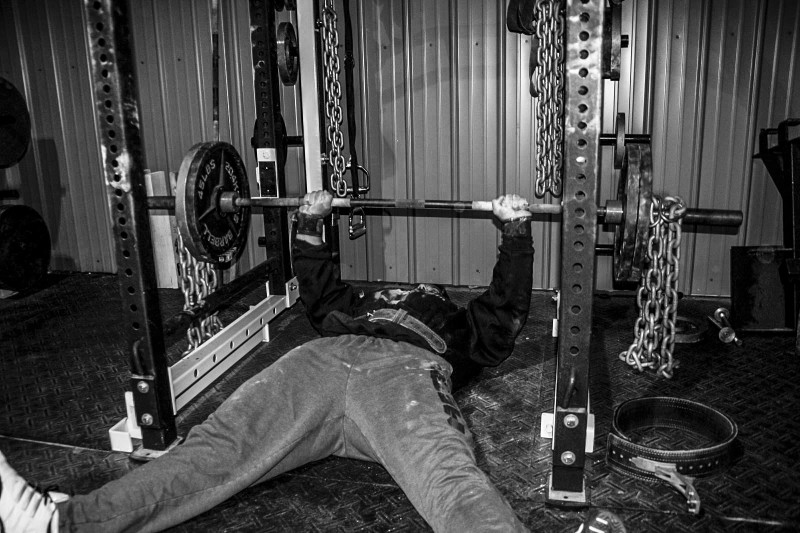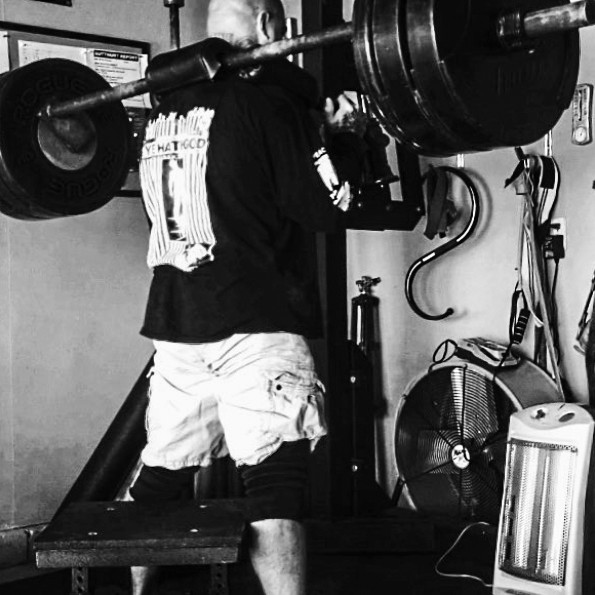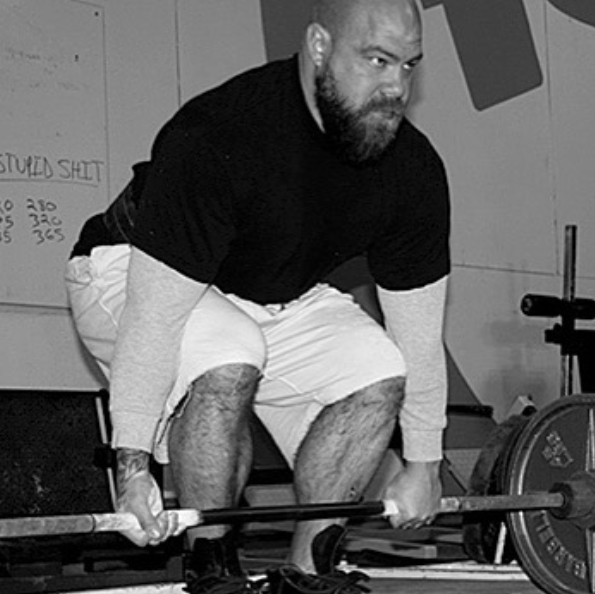
elitefts Classic
In Dave Tate’s article, “Tate's Tool Box: The Art of Program Design Plus 5 New Exercises!” he mentions the role of indicators in your program. To reduce the risk of misquoting him, here is part of the text from the article.
Training Philosophy
Every athlete, coach, and trainer should have his own philosophy of training based on where he's going. Do you want to get stronger? Do you want to add more mass? Do you want to get ripped? Do you want to use training to better your sport of choice? Do you feel being stronger is the key to success? Do you feel being better conditioned is the key? Do you feel you need all these variables? In other words, what do you really want to achieve from your training?
Key Indicators
Once you know this, the next step is to select what "key indicators" you'll use to gauge your process. For a powerlifter, some of these may include the bench press, the squat, the deadlift, weight used for dynamic training, specific max effort movements, weights used for triples, etc.
To further illustrate, I can gauge my squat on my best three-rep max on the good morning, and I can base my bench press on a specific percentage of my best two-board press or floor press. I know others who can predict their best bench or squat on their best triple while training for a meet. These items are very specific to each individual but are indicators used to determine if you're moving closer to, or further away from your goal.
If adding mass is your goal, then your indicators would be lean body mass, circumference measurements, and body weight. When you have your indicators set, then you make sure to track them as your training progresses. If your indicators are going in the right direction, then you stay with what you're doing.
If one indicator falls off or quits progressing, then you address it in your training to get it back on track. The larger and more specific your list of indicators, the better your progress will be.
In this article, I’m going to focus on what my indicators are for the squat, bench, and deadlift, and how I came about them. What this will hopefully do is give you a guide and more numbers to look at when assessing your training. Please understand that all of this is specific to me, not you. The exercises that I list are what I used to determine my progress and where I was in my training.
To make things clear, I use key indicators as a way of assessing my training and knowing where I’m at without having to test my lifts. This is a great thing because everyone wants to know if their training is working but they don’t want to have to have a test day every two weeks. Also, my key indicators (as well as yours) take time to know and develop. They also will change over time, so always be on the lookout and always monitor your training.
Key Indicators for the Bench Press
- Floor Press: When this goes up, so does my bench press. If I ever wanted to know my raw bench press, I could simply floor press during a max effort bench session and add about 25 pounds.
- Dumbbell Bench Press: For this lift, when I can comfortably handle 150 pounds dumbbells for two sets of eight to 12 reps, I know that my bottom end strength for the bench press is right where I need it to be. I noticed that when this movement was strong, so was my strength off of my chest.
- Standing Military Press: I’m not too good at this movement, but when it went up, so did my bench press. If I could press, without too much effort, 275 pounds from my shoulders, then I knew that my shoulder strength was up to par. The term “without too much effort” needs to be qualified so this is what I mean: I can press 275 from my shoulders with little psyche on any given day. This lift always made my low-end strength increase.
- Chest Supported Row: Every machine is different, so weight is going to be inconsequential in this listing. But on the one that we use, if I can handle four plates for two to three sets of six to eight reps, I know my lats and upper back are right where they need to be. For me to bench a PR (or come really close), my lats had to be strong enough to hold the weight as well as be able to maintain the correct bar path.
- Upper Back Hypertrophy: This is a little strange, and no, I didn’t break out the tape measure for this one. If I felt like my upper back was getting thicker and I felt very strong while setting up, I knew that I was on track. Besides the usual rows and chins, I did a lot of seated dumbbell cleans, face pulls, and rear laterals. I was not looking at strength but thickness.
Key Indicators for the Squat
- Box Squat Training at WSB: This is a very strange indicator but stick with me on this one. I did keep track of my progress on the box squat, but the biggest thing that I did with this is to simply stay within shooting distance of Mike Ruggiera and in the same training group as Chuck Vogelpohl. As long as I was still allowed to squat with this group, I was doing okay. As long as I didn’t get ousted by Lou and the rest of WSB from this group, I knew I was on track. So the indicator for me was simply not to get my ass kicked too bad by these guys.
- Power Squat: As many of you already know, I believe this is one of the biggest things that I did to increase my squat. Now, I was always shooting for PRs on this exercise, which was nice because it was a new movement to me and I was always setting records. But as time went along, it wasn’t so much the setting of a PR which was important but how 1000 pounds felt on my shoulders and on the way up. If it felt light and the reps were explosive, I knew that my leg strength was right where I needed it to be.
- Weighted Sit-Ups on Glute Ham Raise: My abs are very important when I squat, so I am always conscious of where I’m at with this exercise. As long as I was able to do five very easy reps with a 45-pound plate behind my head sitting on the GHR, I knew that my abs were strong enough to hit a squat PR.
- 45-Degree Back Raise: Along with my abs, my low back is also extremely important in regard to my squat training. The big thing that I look for on this 45-degree back raise exercise is the ability to do three sets of eight to 10 reps with 100 pounds across my back.
Key Indicators for the Deadlift
These indicators are going to be the same as the squat with these exceptions:
- Rack Pulls: There are a lot of different pins to pull off, but the ones that I felt best carried over were pins two and three. When I set records on these, I knew I was on track.
- Deadlift: This is a little different. As long as I could pull about 90% of my max with little psyche, I felt my deadlift was on track. In fact, for my mental training, I made sure that I was calm as I could be for these lifts. Then when the meet came around, I never had any doubt that I could pull my opener. The key to this was removing mental barriers that I may have had.
Now that we have gone over the indicators, I have thought of one question that may be asked and that I think needs to be discussed. Do I train for my indicators or do I train using my indicators? To make this clear, do I use the dumbbell bench press as a training tool or do I use it as a testing device? The answer is both, but you don’t want to follow the line of thinking that “you have to build the lifts that build the lifts that build the lifts.” See where I’m going? All this is going to do is water itself down so that all you are doing is lying on the couch and meditating. So these indicator lifts are the ones that made up the most of my training, although I did do some different exercises.
What key indicators essentially do is allow you to monitor your training and to see, during a session and a cycle, how everything is going. If you know what to look for (again this is going to take some time and some thought on your part) then you are on the way to becoming stronger. I would highly recommend looking back at your training and what lifts you were doing when you were strongest. Now you have something to evaluate and something to shoot for.












